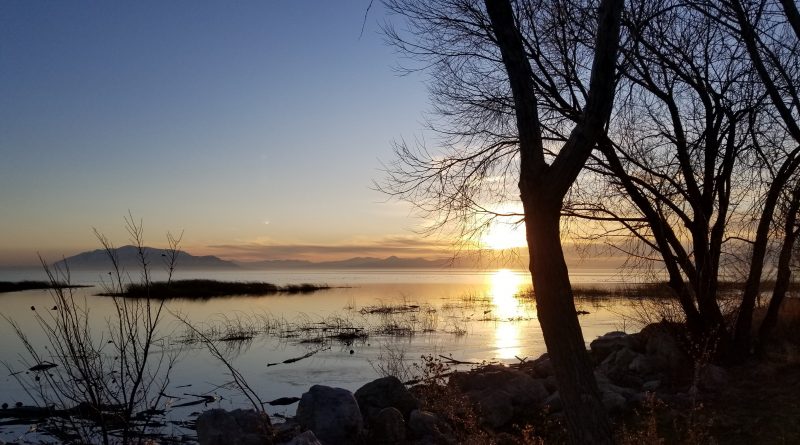OPINION: CHANGE AND WHY IT MATTERS -APPROACH #1

Photo: Amy Vernon Jones

When I was a boy I lived in my grandparents house with my mother and brother. My grandfather was not very involved in my upbringing, but he did want things to go his way. If he told you something and you seemed not to understand or not to agree, his response was to say the same thing to you again, in an angry yell. While I often complied rather than get in more trouble, I have to say that his loudness and wrath never made me more open-minded to his point of view.
How do we change people’s minds or get them more engaged? How do we get the public as a whole, or the government, to take more action on climate change? How do we turn things around in the midst of this climate crisis?
The only way the climate crisis can be stopped is if very large numbers of people demand that solutions be implemented rapidly. For the most part we know what needs to be done (e.g. we know we need to keep fossil fuels in the ground, create a transition to sustainability that provides jobs and justice, deploy solar and wind energy on a massive scale, adopt regenerative agricultural practices and reforestation, reduce consumption, etc.) but it isn’t being done because it doesn’t serve the interests of the wealthy, and the needed political will has not yet been generated. Only a massive social movement can force governments and corporations to do what needs to be done.
How Do We Build Such a Movement?
There are many answers to this question, but they almost all involve everyone who cares about climate change talking about it to everyone they know. Polls show that concern about climate change is growing in the United States, so that some 70% of people now agree it’s happening and want it to be addressed. What we don’t have is everyone talking about it. We don’t have large numbers of people fired up and demanding action at every level. We don’t have big majorities of voters committed to voting against any candidate who doesn’t see climate action as a priority.
The power to create these conditions is in our hands. We must all talk climate in a way that works and show up for climate. I’m committed to helping you be more effective — to helping you engage with the great crisis of our time. There are many crises in our time. The climate crisis threatens such worldwide destruction that perhaps it can bring us together to act on our love for life, for beauty, and for people everywhere. A solution is possible only through a transition to a society that is both green and just — addressing all equity issues at the same time we stop climate change.
If you subscribe to this blog, I will send you tips on how to “talk climate in a way that works.” I’ll also send you encouragement and conversations starters every other Tuesday. I’ll suggest things you can try right away with the people around you. The first suggested approach is detailed below. I’ll send more in future posts. Sometimes I’ll also include tips about how to “show up for climate.”
Talk Climate In A Way That Works
“Talking climate in a way that works” usually requires two things: 1) initiating a conversation or discussion and 2) lots of listening.
How to Begin or Take Your Next Step
Approach #1 – Express Concern and Listen
When someone asks how you are, say something like: “I’m okay but, you know, I’m really concerned about climate change. Are you concerned?” Then listen. Regardless of whether they express concern or not, it will be useful after listening to say something like: “I care about what’s happening, and going to happen, to people, animals, and the environment all over the world. I want to see lots of people insisting that action on climate be a top priority.”
Notice that you don’t need any deep knowledge about climate change to say these things. If someone then asks you a question you don’t know the answer to, a fine response is, “I don’t know. I wonder how we could find out?” You could then try to find an answer and share it with the person. If you can’t find an answer you are welcome to write to me or to our soon-to-be-created Facebook group. I’ll try to help. Taking people’s questions seriously communicates respect and a deep caring about the issues.
Try Approach #1 a few times. I invite you to write to me about how it goes. Contact Me
Show Up For Climate – Plan Now
Movements that have won big changes in public policy – the women’s suffrage movement, the civil rights movement, the anti-war movement (Vietnam War) – all were built on countless one-to-one conversations, and also on very large numbers of people showing up for street demonstrations and protests. Even in countries that are not democracies in any way, when enough people take to the streets to demand change, things change.
On Earth Day, Wednesday, April 22, 2020 there will be many public rallies, demonstrations and protests demanding action on climate change. Decide now that you will free up your schedule, break your routine, do something you don’t usually do, and on that day show up in public to insist on action on climate.
It’s the 50th anniversary of the first Earth Day. On that first Earth Day in 1970, seven million people in the United States participated. That led to the creation of the Environmental Protection Agency and the Clean Air Act – with a President who was no environmentalist. Lots of “ordinary people”, who had never been “activists” in the past, participated, swelled the numbers, and made a difference. Talking about climate “in a way that works” can help us bring more people out to public climate events. Plan now to be part of the action on April 22nd this year and ask others to join you.
There’s much to figure out about how to move things, but let’s start this week with individual conversations and putting Earth Day on our calendars. If you are not yet subscribed to get regular encouragement, tips and insights from me, please subscribe now.
Russ Vernon Jones blogs regularly on climate justice at www.RussVernonJones.org
